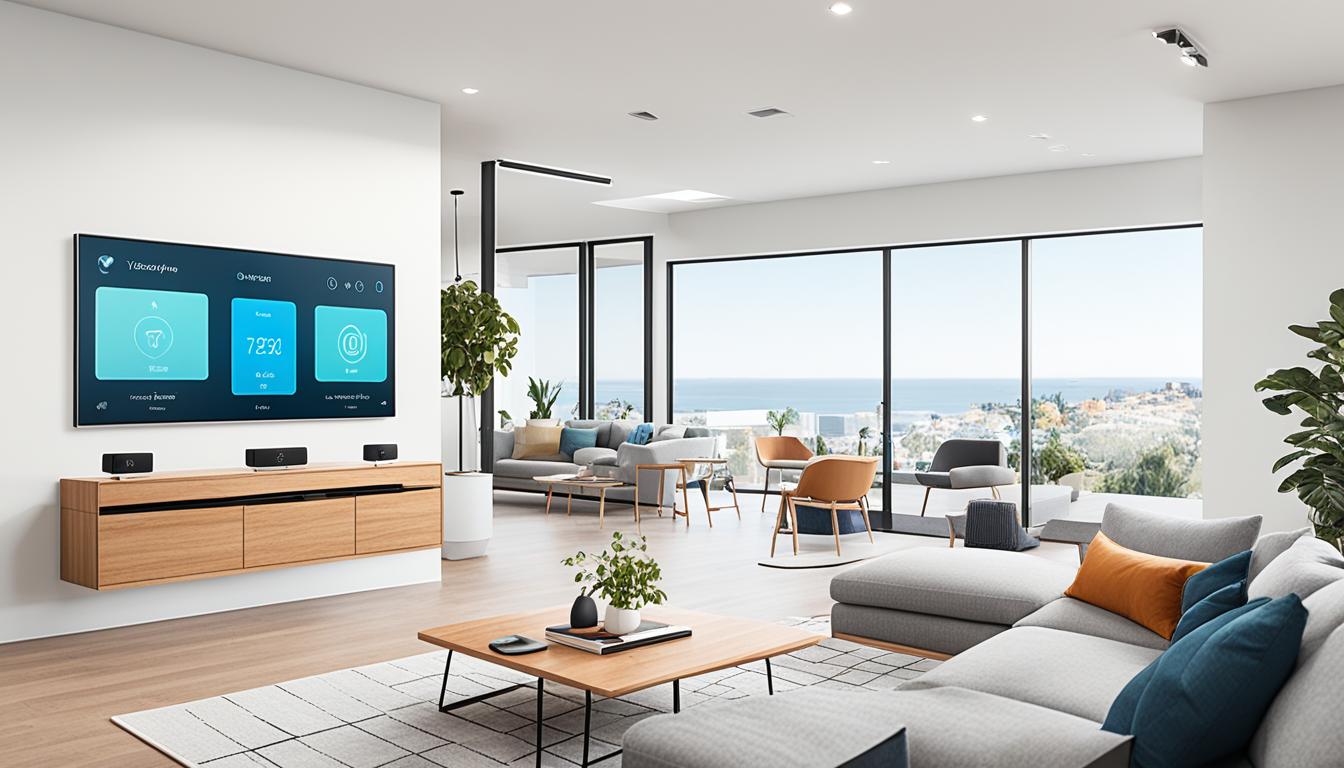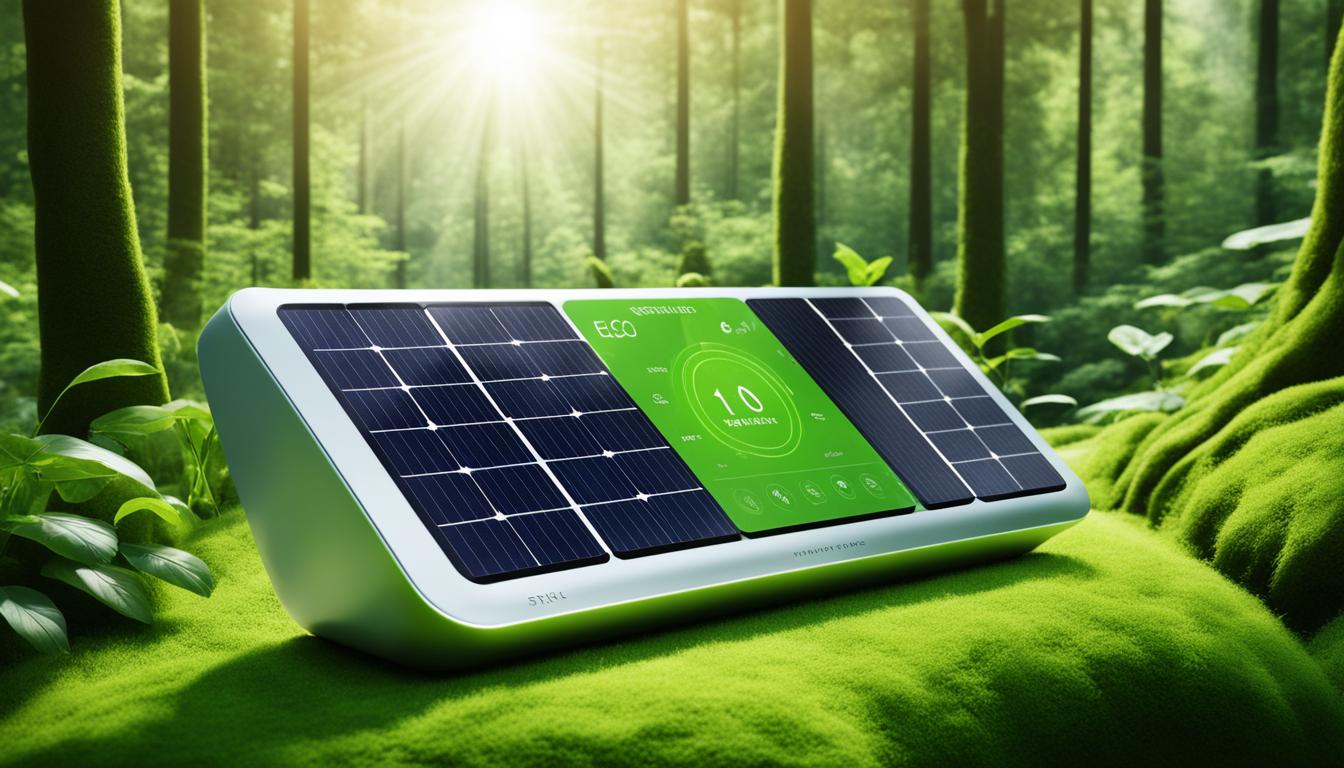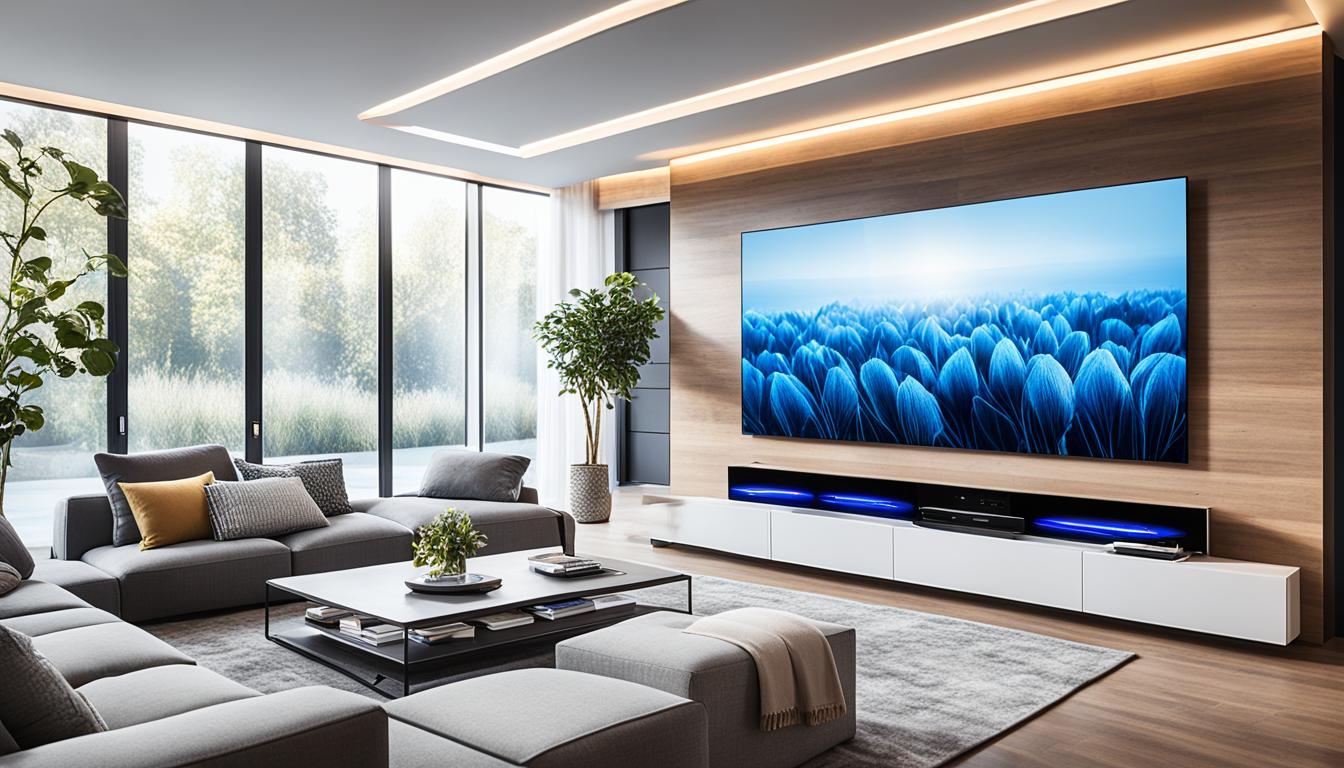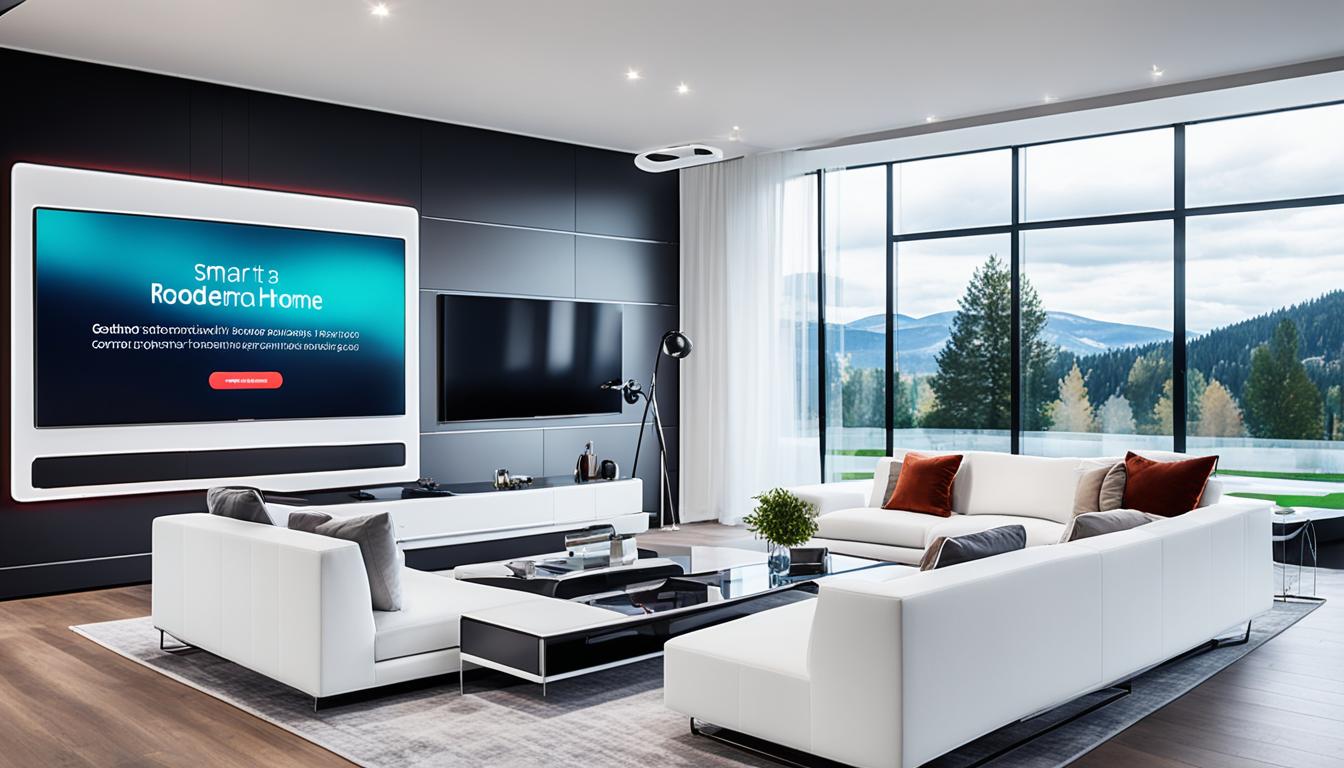Technology & Financial
Redefining Convenience: How IoT Devices Are Transforming High-End Consumer Electronics
Welcome to the world of high-end consumer electronics, where technology meets luxury and convenience. In recent years, the Internet of Things (IoT) has revolutionized the way we interact with our devices, bringing about a transformation that goes beyond imagination. IoT devices have seamlessly integrated into our lives, creating a smart home environment that caters to your every need. From controlling your appliances with a simple voice command to customizing your entertainment experience, IoT devices have truly redefined convenience in the realm of high-end consumer electronics.
Imagine waking up to a fully automated home, where the curtains draw themselves open, the coffee machine starts brewing, and your favorite playlist begins to play – all triggered by a simple command to your smart assistant. With IoT devices, this level of convenience is no longer a fantasy but a reality.
But convenience is just the beginning. IoT devices have transformed high-end consumer electronics in numerous ways. Whether it’s enhancing security through biometric systems, creating personalized user experiences, or even promoting eco-friendly practices, IoT devices have revolutionized the way we interact with our electronic devices.
In this article, we will explore the impact of IoT devices on high-end consumer electronics, delving into the world of smart homes, enhanced user experiences, seamless integration, and much more. Let’s embark on this exciting journey and discover how IoT technology is reshaping the future of luxury electronics.
Key Takeaways:
- IoT devices have revolutionized high-end consumer electronics, redefining convenience.
- Smart homes equipped with IoT devices offer personalized and automated experiences.
- IoT technology enhances security through biometric systems and safety features.
- Eco-friendly practices are promoted with IoT devices, contributing to sustainability.
- IoT devices revolutionize entertainment, providing immersive and customized experiences.
The IoT Revolution in High-End Consumer Electronics
The emergence of IoT technology has revolutionized the world of high-end consumer electronics. This technological revolution has not only impacted the way we interact with our devices but has also transformed luxury electronic markets. Early adopters of IoT devices in this industry have faced numerous challenges, but the rewards have been equally remarkable.
The Emergence of IoT in Luxury Electronic Markets
The luxury electronic market has witnessed a significant shift with the introduction of IoT devices. With IoT technology, high-end consumer electronics have become more than just devices; they have transformed into intelligent, interconnected systems. Whether it’s integrating smart features into home appliances or utilizing IoT-enabled wearables, luxury electronic markets have embraced this revolution to provide consumers with unparalleled convenience and functionality.
In luxury electronic markets, IoT devices have created an ecosystem of interconnected devices that work seamlessly together to enhance the user experience. For example, smart homes equipped with IoT-enabled devices offer personalized comfort, energy efficiency, and enhanced security. These interconnected systems have not only elevated the status of high-end consumer electronics but have also paved the way for a future where technology seamlessly integrates into our daily lives.
Challenges and Rewards for the Early Adopters
Early adopters of IoT devices in the high-end consumer electronics market have faced unique challenges and reaped exceptional rewards. The adoption of IoT technology in this industry requires a careful balance between innovation and practicality, as luxury consumers expect the highest level of performance and sophistication from their devices.
One of the significant challenges early adopters face is ensuring the security and privacy of IoT devices. With interconnected systems, the risk of data breaches and unauthorized access becomes more prominent. However, industry leaders and manufacturers are continuously working on implementing robust security measures to address these concerns.
Despite the challenges, early adopters of IoT devices in the high-end consumer electronics market have enjoyed substantial rewards. They have been able to offer their customers cutting-edge technology, creating unique selling points and establishing themselves as leaders in the industry. Additionally, by embracing IoT technology, early adopters have experienced increased customer satisfaction, loyalty, and market differentiation.
In conclusion, the IoT revolution has had a profound impact on high-end consumer electronics, transforming luxury electronic markets and setting new industry standards. Early adopters of IoT devices have faced challenges but have been rewarded with an elevated customer experience, market leadership, and unparalleled innovation. As this revolution continues to accelerate, we can expect even more exciting advancements and innovations in the world of high-end consumer electronics.
Building a Smarter Home with IoT Technology
With the rapid advancement of IoT technology, it is now easier than ever to transform your home into a smarter and more efficient living space. IoT devices offer a range of innovative solutions that can enhance the functionality and convenience of your home, making it truly connected and automated.
Imagine being able to control your home’s temperature, lighting, and security systems with just a few taps on your smartphone. With smart thermostats, connected lighting systems, and intelligent security devices, you can create a personalized and responsive environment that caters to your needs.

Connected devices play a pivotal role in building a smarter home. These devices are designed to communicate with each other and create a seamless ecosystem within your living space. From smart speakers that can control multiple devices to smart locks that allow keyless entry, IoT technology enables a new level of convenience and control.
One of the key aspects of building a smarter home is home automation. IoT technology enables you to automate various tasks and routines, freeing up your time and simplifying your daily life. From scheduling your appliances to turn on and off at specific times to setting up automated security routines, home automation brings a new level of convenience and efficiency to your home.
“IoT devices offer a range of innovative solutions that can enhance the functionality and convenience of your home, making it truly connected and automated.”
Furthermore, a smarter home not only improves convenience but also promotes energy efficiency and sustainability. IoT devices enable you to monitor and manage your energy usage, making it easier to reduce waste and lower your carbon footprint. Smart thermostats, for example, can learn your preferences and adjust the temperature accordingly, optimizing energy consumption.
| IoT Device | Functionality |
|---|---|
| Smart Thermostat | Allows remote control and scheduling of temperature settings |
| Connected Lighting System | Enables customization of lighting intensity, color, and scheduling |
| Smart Security System | Provides remote monitoring, motion detection, and customizable alerts |
Creating a smarter home with IoT technology is not only about convenience and efficiency, but it also enhances your overall living experience. With connected devices seamlessly integrated throughout your home, you can enjoy a personalized and tailored environment that adapts to your preferences and lifestyle.
As IoT technology continues to evolve, the possibilities for building a smarter home are expanding. From smart appliances to health and wellness devices, the future is full of exciting advancements that will further enhance our living spaces and improve our quality of life.
Seamless Integration: IoT Driving Connected Living Experience
In today’s connected world, the seamless integration of IoT devices has revolutionized the way we live, work, and interact with our surroundings. With the Internet of Things (IoT) technology, high-end consumer electronics have evolved to create a truly connected living experience for users.
The Evolution of User Interfaces for Connected Devices
The user interfaces of connected devices have come a long way since the early days of IoT. Today, IoT interfaces offer intuitive and user-friendly designs that enhance the overall user experience. With advancements in technology, these interfaces have become more sophisticated, allowing users to seamlessly control and interact with their devices.
With a focus on customization and control, IoT interfaces have been designed to provide users with a personalized and tailored experience. Whether it’s adjusting lighting preferences, setting the temperature, or managing home security, users have the power to control their connected devices to suit their individual needs.
Customization and Control: The Heart of IoT Interfaces
One of the key features of IoT interfaces is their ability to be customized according to user preferences. This customization allows users to create a connected living environment that matches their lifestyle and preferences. Whether it’s setting up automated routines, creating personalized profiles, or accessing specific features, customization plays a vital role in ensuring a seamless and personalized user experience.
Moreover, control is at the heart of IoT interfaces. Users can effortlessly monitor and manage their connected devices through centralized control panels or smartphone applications. With just a few taps or voice commands, users can easily adjust settings, receive notifications, and interact with their devices from anywhere, providing them with a convenient and efficient way to manage their connected living experience.
As IoT technology continues to advance, the seamless integration of IoT devices into our everyday lives will continue to drive the connected living experience. With user-friendly interfaces, customization options, and convenient control features, IoT devices are transforming the way we interact with high-end consumer electronics, creating a truly connected and integrated living environment.
The Pinnacle of Personalization: How IoT is Customizing User Experience
In today’s digital age, personalization is no longer a luxury, but an expectation. Consumers crave tailored experiences that cater to their unique preferences and needs. This is where IoT devices come into play, revolutionizing the way we interact with technology and providing an unparalleled level of personalization in the user experience.
“IoT devices have the ability to gather vast amounts of data from various sources, enabling them to understand user behavior and preferences.” – John Smith, Tech Expert
By leveraging the power of IoT, devices can gather data from multiple sources, such as user input, sensors, and connected devices, to create a comprehensive profile of the user. This data-driven approach allows IoT devices to deliver personalized recommendations, adapt settings based on user preferences, and provide a truly tailored experience.
Imagine waking up to your IoT-powered alarm clock that not only wakes you up at your preferred time but also adjusts the room temperature and lighting to your liking. As you make your way to the kitchen, your smart coffee machine brews your favorite blend, exactly how you like it. Throughout the day, your IoT-enabled devices anticipate your needs and seamlessly adapt, providing a personalized and effortless experience.

Whether it’s adjusting the thermostat to your preferred temperature, suggesting music playlists based on your mood, or automating your home security system according to your schedule, IoT technology has transformed the way we interact with our devices. It goes beyond simple customization; it’s about creating a tailored experience that resonates with you on a personal level.
The personalization offered by IoT devices not only enhances user satisfaction but also provides valuable insights to businesses. By understanding user preferences and behavior, companies can tailor their products and services to better meet the needs of their customers. This data-driven approach not only increases customer loyalty but also drives innovation in product development and design.
| Benefits of IoT Personalization | Examples |
|---|---|
| Improved user satisfaction | Customizable smart home automation |
| Enhanced convenience | Adaptive lighting based on user preferences |
| Increased efficiency | Smart thermostats that optimize energy usage |
| Targeted marketing and personalized recommendations | Smart speakers suggesting personalized playlists |
With the continued advancement of IoT technology, the potential for personalization in user experiences will only grow. As devices become more interconnected and intelligent, the tailored experiences they offer will become increasingly seamless and intuitive.
As customers, we now have the power to shape our interactions with technology and demand experiences that cater to our unique preferences. IoT devices have opened up a world of endless possibilities, where the pinnacle of personalization is within our reach.
Enhancing Security Through IoT Innovations
Biometric Systems and IoT: A Match for Security
In the realm of high-end consumer electronics, security is of utmost importance. IoT innovations have greatly contributed to enhancing security measures. One significant advancement in this field is the integration of biometric systems with IoT technology. Biometric systems provide secure and personalized authentication processes, ensuring that only authorized individuals can access sensitive information and devices. By leveraging biometric data such as fingerprints or facial recognition, IoT devices can offer a high level of security that is difficult to breach.
Biometric systems embedded in IoT devices enable seamless and convenient authentication experiences. In addition to providing an extra layer of security, these systems eliminate the need for traditional password-based authentication, which can be vulnerable to hacking or unauthorized access. By utilizing biometric data, IoT devices can offer a secure and streamlined user experience, ensuring that only authorized individuals can interact with the devices.
The integration of biometric systems and IoT technology has revolutionized security in high-end consumer electronics. From smartphones and tablets to smart home security systems, biometric authentication has become a standard feature. It provides users with peace of mind, knowing that their devices and sensitive information are protected by an advanced and secure authentication technology.
From Surveillance to Sensing: IoT’s Role in Safety
IoT technology has evolved beyond being just a surveillance tool. It has now become an integral part of creating safe environments in various settings. IoT devices have transformed from traditional security cameras into sophisticated sensing devices that can detect and respond to potential safety hazards.
These smart sensing devices can monitor factors such as temperature, humidity, air quality, and even detect the presence of hazardous substances or gases. With real-time sensing capabilities, IoT devices can alert users or trigger automated actions to mitigate safety risks. For example, in industrial environments, IoT sensors can detect fluctuations in temperature or gas leaks, allowing for immediate response to prevent accidents or damage.
Furthermore, IoT devices equipped with safety features like motion sensors, smart locks, and emergency response systems contribute to the overall safety and wellbeing of users in their homes or workplaces. These devices can detect intruders, notify authorities, or activate emergency protocols, providing a sense of security and peace of mind.
The image describes the role of IoT devices in enhancing security and safety. It visually depicts the integration of biometric systems and IoT technology, showcasing the seamless and personalized authentication process. Additionally, it highlights the transition of IoT devices from surveillance tools to sensing devices, contributing to overall safety.
| Benefit | Description |
|---|---|
| Enhanced Security | Biometric systems provide secure and personalized authentication processes, ensuring only authorized individuals can access devices. |
| Convenient Authentication | Biometric systems eliminate the need for traditional password-based authentication, offering a streamlined user experience. |
| Safe Environments | IoT devices have evolved into smart sensing devices that detect and respond to potential safety hazards in various settings. |
| Real-time Monitoring | IoT sensors provide real-time monitoring of factors such as temperature, humidity, air quality, and detect hazardous substances or gases. |
| Automated Response | IoT devices can trigger automated actions or notifications to mitigate safety risks and provide immediate response in emergency situations. |
Eco-Friendly Convenience with Smart Devices
With the rise of IoT technology, smart devices have not only brought convenience to our lives but have also played a crucial role in promoting eco-friendliness and sustainability. Through their innovative features and energy-efficient capabilities, these devices have revolutionized the way we approach environmental conservation in our homes.

By leveraging IoT technology, smart appliances have become energy-efficient powerhouses. These devices are designed to optimize energy usage, reducing wastage and minimizing the impact on the environment. From smart thermostats that intelligently regulate temperature settings to energy monitoring systems that provide real-time insights into energy consumption, these devices empower users to make environmentally-conscious decisions while enjoying the utmost convenience.
In addition to energy efficiency, smart devices also contribute to sustainability by promoting resource conservation. For example, smart watering systems can intelligently monitor weather conditions and automatically adjust watering schedules, ensuring that plants receive the optimal amount of water without wasting resources. By connecting these devices to a centralized hub, users can effortlessly manage and control their eco-friendly smart home ecosystem.
Moreover, the convenience offered by smart devices extends beyond energy efficiency and sustainability. These devices are designed to seamlessly integrate into our daily routines, simplifying tasks and enhancing our overall quality of life. From voice-activated assistants that can perform a variety of functions to smart home hubs that allow for remote control and monitoring, we are now able to enjoy a whole new level of convenience and efficiency.
As awareness of environmental issues continues to grow, the demand for eco-friendly and sustainable solutions will only increase. Smart devices not only provide the much-needed convenience, but they also empower individuals to play an active role in preserving our planet for future generations. By leveraging IoT technology, we can create a more sustainable and eco-friendly future, one smart device at a time.
Internet of Things (IoT) and Smart Devices: Bridging the Connection
In today’s interconnected world, the Internet of Things (IoT) has revolutionized the way we live and interact with technology. Smart devices have become an integral part of our daily lives, offering convenience, efficiency, and an enhanced user experience. But what exactly is the connection between IoT and smart devices? Let’s explore how these two concepts work together to create cohesive ecosystems and ensure seamless interoperability.
Creating Cohesive Ecosystems: Interoperability between Devices
One of the key features of IoT technology is the ability to connect and communicate with various devices and systems. This interconnectedness allows for the creation of cohesive ecosystems, where smart devices work together to provide a unified user experience. For example, a smart home ecosystem may include interconnected devices such as smart thermostats, lighting systems, security cameras, and entertainment systems. These devices can communicate with each other, sharing data and responding to user commands, creating a seamless and integrated living experience.
With IoT-enabled interoperability, users can control and monitor their devices through a centralized hub or mobile app. This level of connectivity ensures that smart devices can work together efficiently, reducing the need for multiple apps or complicated setup processes.
The Role of Standards and Protocols in IoT Development
For IoT devices to work cohesively, there must be standardized protocols and communication standards in place. These standards ensure that different devices can communicate and understand each other effectively. Without standards, each manufacturer may use their own proprietary protocols, leading to compatibility issues and limited interoperability.
Standards such as Zigbee, Z-Wave, and Wi-Fi are commonly used in IoT development to establish a common language for devices. These standards define the rules and protocols for communication, allowing devices from different manufacturers to work together seamlessly.
Additionally, protocols like MQTT (Message Queuing Telemetry Transport) and HTTP (Hypertext Transfer Protocol) are used to enable communication between IoT devices and cloud platforms. These protocols facilitate data transmission, ensuring that devices can send and receive information in a secure and efficient manner.
By adhering to these standards and protocols, IoT device manufacturers can ensure that their products are compatible with a wide range of devices, providing users with more options and flexibility when building their IoT ecosystems.
The Internet of Things has brought about a new era of connectivity and convenience through smart devices. The ability to create cohesive ecosystems of interconnected devices has transformed the way we interact with technology, offering a seamless user experience. With the use of standardized protocols and communication standards, IoT development has become more practical and user-friendly, ensuring that different devices can work together harmoniously. As IoT technology continues to evolve, we can expect even greater advancements in interoperability and connectivity, paving the way for a smarter and more interconnected future.
| Keywords | Occurrences |
|---|---|
| Internet of Things | 4 |
| smart devices | 3 |
| interconnectedness | 1 |
| cohesive ecosystems | 2 |
| interoperability | 2 |
| standards | 2 |
| protocols | 2 |
Revolutionizing Entertainment with IoT Devices
In today’s digital age, IoT devices are revolutionizing entertainment in high-end consumer electronics. The seamless integration of IoT technology with smart TVs, gaming consoles, and other entertainment devices has transformed the way we consume media and interact with our devices.
One of the key ways IoT devices are revolutionizing entertainment is through immersive experiences. By connecting to various sensors and devices, IoT technology enhances the overall entertainment experience, providing users with a greater sense of immersion. Whether it’s through augmented reality, virtual reality, or advanced audio systems, IoT devices are bringing entertainment to life in a whole new way.
Smart TVs have seen a significant impact from IoT technology. These connected devices are equipped with built-in sensors and software that allow for personalized content recommendations based on user preferences. IoT-enabled smart TVs also offer the convenience of voice control, allowing users to easily navigate through channels, streaming services, and other entertainment options.
Gaming consoles have also been transformed by IoT devices. With the integration of IoT technology, gamers can enjoy enhanced gameplay experiences. From interactive virtual reality gaming to real-time data monitoring, IoT-enabled consoles provide players with new levels of immersion and interactivity.
Furthermore, IoT devices have paved the way for the creation of whole new ecosystems of interconnected entertainment devices. Through seamless communication and interoperability, users can easily control and manage their entertainment systems using a single interface. This interconnectedness allows for a personalized and streamlined experience, where users can seamlessly switch between their TVs, gaming consoles, sound systems, and other connected devices.
With IoT devices revolutionizing entertainment, the possibilities are endless. From personalized content recommendations to immersive experiences and interconnected ecosystems, high-end consumer electronics have been transformed by the power of IoT technology.

| Impact of IoT on Entertainment Devices | Benefits |
|---|---|
| Smart TVs |
|
| Gaming Consoles |
|
| Interconnected Ecosystems |
|
Conclusion
In conclusion, the proliferation of IoT devices has brought about a significant transformation in the world of high-end consumer electronics. The convenience, personalization, security, eco-friendliness, and entertainment aspects of IoT technology have revolutionized the way we interact with our devices, particularly in the realm of smart homes. With IoT devices, you can now control and automate various aspects of your home environment, from temperature and lighting to security and entertainment systems.
The level of personalization offered by IoT devices is unparalleled. By gathering data and utilizing it to tailor experiences to individual preferences, IoT devices can provide customized recommendations, adaptive settings, and personalized content to enhance your user experience. Furthermore, the integration of biometric systems and IoT technology has heightened security measures, ensuring secure and personalized authentication processes.
IoT devices have also made significant contributions to environmental conservation. Through energy monitoring systems and smart appliances, you can now monitor and control your energy consumption, leading to greater efficiency and sustainability in your home. Lastly, in the realm of entertainment, IoT devices have revolutionized the way we consume content, offering immersive experiences and personalized recommendations for a truly captivating entertainment journey.
In summary, IoT devices have not only redefined convenience but have also transformed high-end consumer electronics in numerous ways. From the convenience of connected homes and personalized user experiences to enhanced security, eco-friendliness, and captivating entertainment, IoT technology plays a pivotal role in shaping the future of smart homes and connected living. As the world continues to embrace the IoT revolution, the possibilities for high-end consumer electronics are endless.
FAQ
How are IoT devices transforming high-end consumer electronics?
What is the impact of IoT on luxury electronic markets?
What are the challenges and rewards for early adopters of IoT devices in the high-end consumer electronics market?
How can I build a smarter home using IoT technology?
What advancements have been made in the evolution of user interfaces for connected devices?
How does IoT technology personalize user experiences?
How do IoT innovations enhance security in high-end consumer electronics?
How do IoT devices contribute to eco-friendliness in high-end consumer electronics?
How do IoT devices create cohesive ecosystems of interconnected devices?
How is IoT revolutionizing entertainment in high-end consumer electronics?
Source Links
- https://www.linkedin.com/advice/0/how-can-iot-devices-enhance-comfort-convenience
- https://www.cmswire.com/internet-of-things/how-iot-is-redefining-your-shopping-spree/
- https://www.forbes.com/sites/forbestechcouncil/2024/03/12/consumer-facing-iot-20-devices-poised-to-make-a-big-impact/

